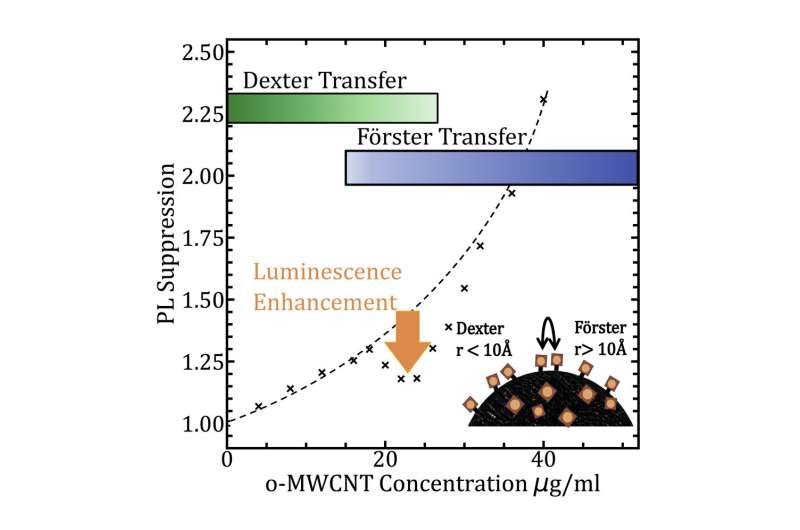Nanoparticles that mimic plant pigment to deliver better solar panels

Researchers have taken inspiration from the world of plants to develop innovative and efficient nanoparticles that could be used to build the solar panels of the future.
A team of engineers and biologists from the University of Surrey have synthesized nanoparticles that mimic what chlorophyll (the green pigment in most plants) does in nature—absorb light and convert it to usable energy with high efficiency. Their results are published in Cell Reports Physical Science.
Past approaches have not been able to match what nature achieves; the efficiency of light-absorbing pigments drops when tightly packed. In the study, Surrey's researchers detail how they developed a unique synthetic pigment that keeps its fluorescent intensity longer.
Michael Spencer, lead author of the study and Ph.D. student at the University of Surrey, said:
"Mother Nature can teach us so much as we all think of ways to nurse our planet back to health. In this study, we looked at how light is absorbed, enhanced and utilized in biological systems, and we have incorporated those mechanisms into our own hybrid devices.
"The performance of our device gives us hope that the solar panels of the future can ditch the use of toxic materials currently used to maintain their intensity."
Surrey's new approach uses nanoparticles as a platform for the light absorbers, showing an enhanced efficiency under certain conditions and offering a controlled approach to the further study and eventual realization of high-efficiency artificial light converters.
Professor Ravi Silva, Director of the Advanced Technology Institute at the University of Surrey, said: "Solar panels are a crucial part of our journey towards net-zero carbon; we need to think outside of the box if future high-efficiency solar panels are to meet their full potential. The creative thinking exhibited by this team is exactly what is needed to make sure solar meets and exceeds expectations. The deployment of solar technologies can happen decades faster than nuclear at present, and even in the U.K., solar electricity generation costs are much cheaper."
More information: Michael G. Spencer et al, Resonant quenching of photoluminescence in porphyrin-nanocarbon agglomerates, Cell Reports Physical Science (2022). DOI: 10.1016/j.xcrp.2022.100916

















